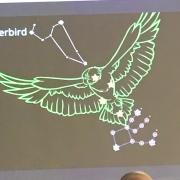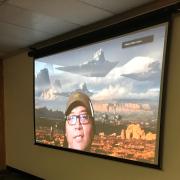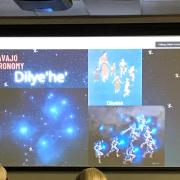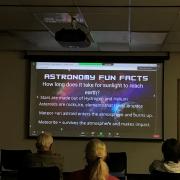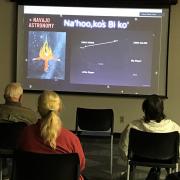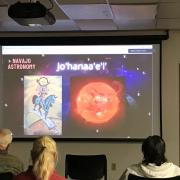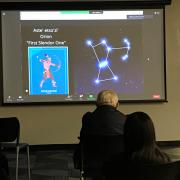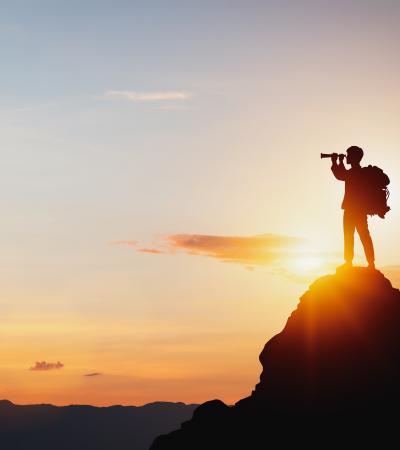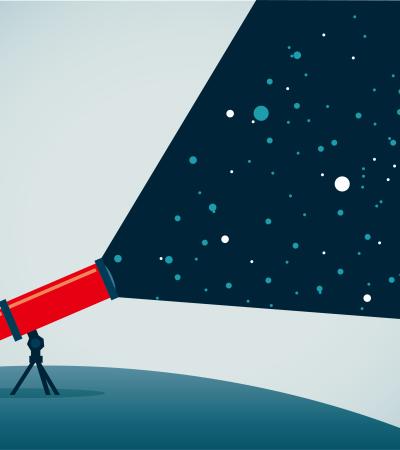Navajo Astronomy was a hybrid program comprised of three virtual and in-person sessions presented in both the English and Diné languages during the winter months of January through early March. The program described traditional Navajo astronomy, constellations, and the unique way in which Navajo people view the cosmos. Presentations covered winter storytelling and discussions of Navajo culture and ceremonies.
Traditionally, winter stories are only told during the winter months which meant that the library was culturally not allowed to record the stories.
Advanced Planning
The goal was to use astronomy, constellations, and storytelling to help get our patrons excited about astronomy, physics, and science in general, encouraging a life-long understanding of science for all and an advanced study for others.
Planning for the series began in November when contact was first made with the Navajo astronomer. Planning and scheduling took place in December via Zoom meetings.
This was a hybrid program with presentations conducted live on Zoom, Facebook and in-person at the library. Staff included were the Deputy Director for the communication and planning of the programming, one Information Technology staff member to run the technical side of the presentation, and two additional staff members to handle the in-person portions of the program.
Marketing
A monthly press release was distributed to local newspapers and radio stations and the program was featured in our monthly newsletter. We also made a QR code and miniature fliers that were distributed in curbside requests and at our monthly outreach at the local mall.
A Facebook paid advertisement, Gallup Sun local newspaper advertisement, and an invitation to Gallup McKinley County Schools with the Zoom link were sent.
Budgeting
This program was supported through a NASA@ My Library grant.
The total budget was $1,400 comprising an honorarium fee of $900 to the presenter, $400 for advertisements, and $100 to staff time to create, print and distribute the fliers.
Day-of-event Activity
We used the Octavia Fellin Public Library recording studio to record the presentation with Zoom and project it on screen.
We needed staff to handle logistics of the online and in-person components of the program. An Information Technology staff member ran the technical side by handling the Zoom and Facebook logistics of the presentation. Two additional staff members were present in the library to set up the meeting room for the in-person portion of the event and to moderate the discussions.
Program Execution
The Navajo Astronomer was not present at the library but was able to host virtually using the Zoom platform. He was pinned as the presenter and was able to share his screen, answer questions and interact with the audience that was present in-person at the library or via Zoom and Facebook chats.
The first presentation was held on National Family Literacy Day live virtually or in-person at the Main Library on Thursday, January 27, 2022. The second presentation was on February 18, 2022 and the final one was on March 11, 2022.
All three of the presentations had around 50 people in attendance both virtually and in-person. We distributed a survey to patrons after the presentations for feedback.
Advice
Since this program is so culturally significant and personal to our library’s community, it might not be ideal for all libraries to replicate this program exactly unless they bring on a Navajo astronomer to conduct the presentations.
My advice would be to research an astronomer that is local to your community or someone who can share how astronomy is used in their own culture.
Funding for this article has been provided by the National Endowment for the Humanities (NEH) as part of the American Rescue Plan: Humanities Organization Grant.

